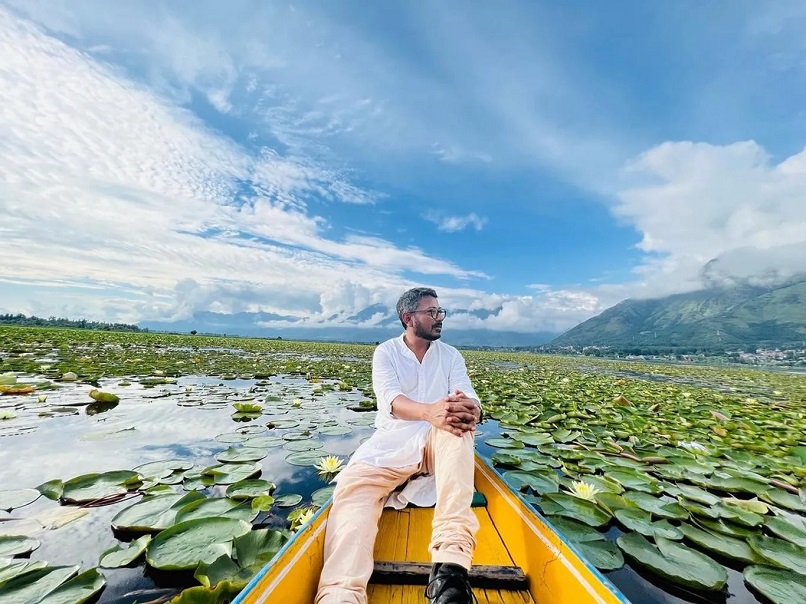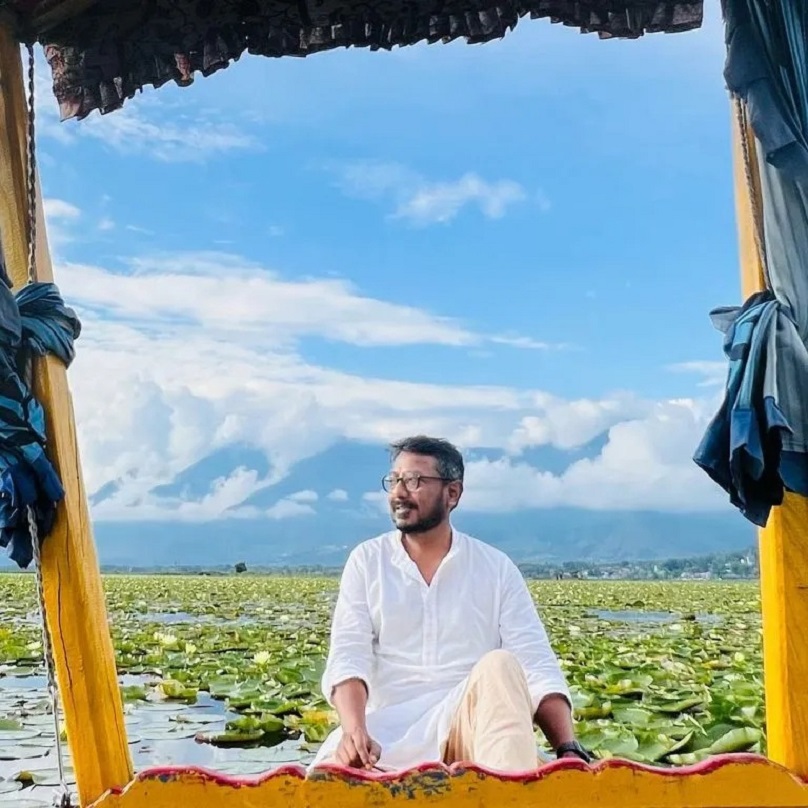
By Rhys Gonsalves
UNLIKE the Bollywood biggies routinely shooting at some select-few valley locations, filmmaker Onir of the “I Am” fame has shot, for the first time, an entire feature film in Gurez valley, predominantly with local cast and dialogues.
“Everyone goes to the usual shooting locations such as Sonmarg, Gulmarg, and Pahalgam,” Onir told Kashmir Observer in his Mumbai studio. “But I’m pleased that I was able to shoot a film that is entirely set in Gurez, with 60 per cent of the dialogues in Kashmiri and 50 per cent of my actors being Kashmiri.”
Terming his Kashmir shooting experience as excellent, Onir says it was important for him to use the Kashmiri language and talent to go beyond the typical narrative that is envisioned.
“I believe that more Kashmiris, particularly young people, should begin learning filmmaking and be the ones to tell more stories about their homeland,” the filmmaker says.
“There are so many stories because of their experience. So many stories remain untold.”
In a brief chat with Kashmir Observer, Onir discusses the importance of cinema, filmmaking and Kashmir as a location.

Many say Shahrukh Khan’s Pathaan broke the “cinema curse” of Kashmir after 33 years, what does it mean for Bollywood’s ‘shooting paradise’?
What’s more welcome than what it means for Bollywood, in my opinion, is that cinema has returned to the valley after 3 decades.
Pathaan bringing people back to the theatres in Kashmir is something to be proud of because without entertainment, the valley would be engulfed in conflict.
You shot an entire feature film ‘Chahiye thoda pyaar’ in Gurez, how was the experience shooting in Kashmir?
I think it was very good because it was possibly the first film shot in Gurez, which is a relatively unknown location.
Everyone goes to the usual shooting locations such as Sonmarg, Gulmarg and Pahalgam. But I’m pleased that I was able to shoot a film that is entirely set in Gurez, with 60 per cent of the dialogues in Kashmiri and 50 per cent of my actors being locals.
I received a lot of assistance from Bandipora and Gurez authorities. They obtained all of the necessary permissions, including for drone to shot our area. The residents of Gurez were equally and extremely helpful.
Now I want to work with some of the people I worked with in Kashmir. I believe that when the film industry comes to the valley to shoot, it empowers people from there to come to the rest of India.
Do you’ve any recollection of dealing with a difficult situation while filming in the valley?
Honestly speaking, no. Gurez is so beautiful that everything becomes worth around it despite the power issues and underdeveloped hospitality sector.
It was critical for us not to encourage the use of any kind of plastic. We had our own water bottles and didn’t use any disposable items for food.
While my experience shooting in Kashmir was excellent, I believe Gurez requires more sustainable and cautious development. Otherwise, it will take over and destroy itself, just like all other institutions.
But with an entourage of filmmakers making rounds of the valley, do you see the right projection of the place?
I don’t think everyone projects it correctly. You should be aware that some people are only projecting the story, the conflict. And I’d like to work on the other stories.
It was also important for me to use the Kashmiri language, local talent, and to go beyond the typical narrative that is envisioned. I believe that more Kashmiris, particularly young people, should begin learning filmmaking and be the ones to tell more stories about their homeland. There are so many stories because of their experience. So many stories remain untold.
However, the main issue with young Kashmiris is that they do not want to leave their comfort zone. If I come to Bombay from Bhutan and become a filmmaker, they should also come, learn the art, and then create stories about Kashmir.
It’s important to look at oneself from different perspective. Otherwise, people who have left Kashmir and those who have remained there will always have a different way of looking at reality.
But what role does Bollywood play in shifting public perceptions of Kashmir?
Cinema, in my opinion, is a very important medium. I shot ‘I am’ and it was a film about a Kashmiri Pandit and a Kashmiri Muslim. It’s important for me to talk about the masses and how everyone thinks—in terms of speech—because not only Bollywood but also regional languages are being filmed in Kashmir.
I believe it’s critical to have narratives that are responsible and value people, culture and this is what I see. Cinema is a partisan medium. The tool should be used with care and love.
So how do audiences respond to the movies based on Kashmir? Do they raise some troubling question?
It all depends. Some recent films, I believe, made a lot of noise, but not the right kind of noise. To be honest, I’m not comfortable watching a film that makes my minority-community friends uncomfortable.
For me, a film must tell every truth and find peace and love. No film should be used to instil hatred. I’m simply speaking as a filmmaker. There is far too much hatred and conflict in the world. As humans, if we can love and live together, there is nothing more valuable than that.
Follow this link to join our WhatsApp group: Join Now
Be Part of Quality Journalism |
Quality journalism takes a lot of time, money and hard work to produce and despite all the hardships we still do it. Our reporters and editors are working overtime in Kashmir and beyond to cover what you care about, break big stories, and expose injustices that can change lives. Today more people are reading Kashmir Observer than ever, but only a handful are paying while advertising revenues are falling fast. |
| ACT NOW |
| MONTHLY | Rs 100 | |
| YEARLY | Rs 1000 | |
| LIFETIME | Rs 10000 | |










